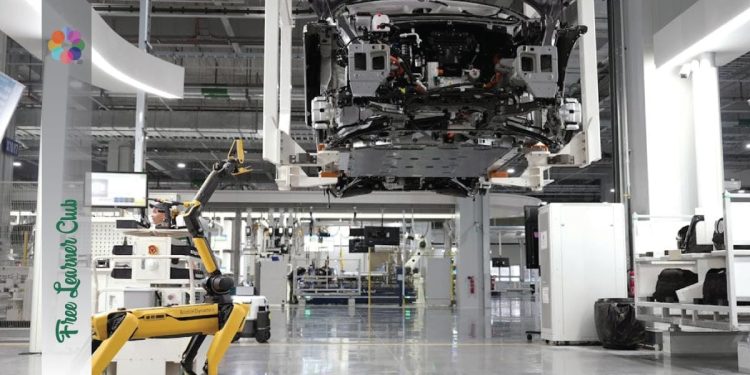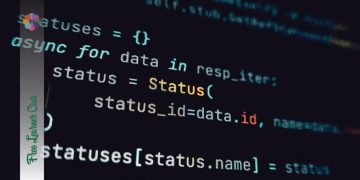The Internet of Things (IoT) is bridging the gap between the physical and digital worlds, enabling the interconnection of devices and systems. This article examines how IoT is transforming a range of sectors, from the smart home to industry, and how it is changing the way we interact with our environment.
Definition of the Internet of Things (IoT)
The Internet of Things (IoT) refers to the network of interconnected physical devices that collect, exchange, and process data over the Internet. These devices, ranging from household appliances to industrial sensors, are equipped with technologies that allow them to communicate and act on the information they receive.
The IoT turns everyday objects into “smart” objects by allowing them to interact with each other and with users, thereby providing greater automation and efficiency in various areas of daily life.
The essence of IoT lies in the integration of sensors and software into physical devices so that they can collect data from the environment and send that information to central systems for analysis. This connectivity not only facilitates remote monitoring and control of these devices but also enables real-time decision-making.
As more objects become connected to this network, IoT is transforming the way we interact with technology, offering new possibilities for resource management and improving quality of life.
IoT Applications in the Smart Home
The Internet of Things (IoT) has revolutionized the concept of the smart home by integrating connected devices that improve comfort, efficiency, and security in the home. These applications allow users to control and automate various home functions through their smartphones or centralized control systems.
Among the main applications of IoT in the smart home are:
- Smart heating and cooling systems: Smart thermostats, such as the Nest or Ecobee, automatically adjust the home temperature based on user preferences and usage patterns. They also allow remote control through mobile apps, optimizing energy consumption and reducing costs.
- Automated lighting: Smart bulbs and lighting systems allow you to schedule and control the intensity and color of your lights from a mobile device. They can also be integrated with motion sensors to turn lights on or off automatically, contributing to a more efficient and safer environment.
- Connected appliances: Smart appliances such as refrigerators, ovens, and washing machines can be controlled and monitored remotely. For example, a smart refrigerator can notify the user when products are running low or even make purchasing recommendations based on the content.
These applications not only improve quality of life by offering greater control and personalization but also contribute to greater energy efficiency and home security. The growth of IoT is driving the evolution of homes into smarter and more adaptive environments.
IoT in Industry and Manufacturing
| Application Area | Device Examples | Main Benefits |
| Process Automation | Sensors and actuators in machinery | Greater efficiency and reduction of errors |
| Predictive Maintenance | Vibration and temperature sensors | Reduction of downtime |
| Supply Chain Optimization | RFID and tracking systems | Improved inventory and logistics management |
The Internet of Things (IoT) has had a significant impact on industry and manufacturing, transforming traditional processes into smarter, more connected systems. The integration of IoT devices in these sectors enables greater automation, real-time monitoring, and data analysis, resulting in a range of operational benefits.
Among the most notable applications of IoT in industry and manufacturing are:
- Process Automation: Connected sensors and actuators enable automation and control of manufacturing processes with unprecedented precision. These devices collect real-time data on machine performance, automatically adjusting parameters to optimize production and reduce errors.
- Predictive Maintenance: Using sensors for vibration, temperature, and other critical parameters, IoT facilitates predictive maintenance by identifying potential problems before they cause serious failures. This not only extends the life of equipment but also minimizes unplanned downtime, improving overall efficiency.
- Supply Chain Optimization: IoT-based technologies, such as RFID tracking systems and location sensors, enable more efficient inventory and logistics management. Real-time data on product location and status helps improve accuracy in the supply chain, reducing costs and improving responsiveness.
These applications demonstrate how IoT is revolutionizing the industry by offering smarter and more connected solutions that promote operational efficiency and innovation in manufacturing processes.
Impact of IoT on Health and Wellness
The Internet of Things (IoT) has introduced significant changes to the healthcare sector, improving the quality of care and the management of personal well-being. Connected devices such as vital signs monitors and wearables enable constant monitoring of patient’s health in real-time.
This facilitates more accurate and continuous monitoring, helping healthcare professionals detect abnormalities or problems before they become critical situations. Telemedicine also benefits from the IoT by enabling remote consultations and the exchange of medical data between patients and doctors, making care more accessible and efficient.
In addition to improving healthcare, IoT plays a crucial role in overall wellness by offering solutions for personal health management. Wearable devices such as smartwatches and fitness trackers provide users with detailed information about their physical activity, sleep patterns, and other health indicators.
This information helps users make informed lifestyle decisions and adjust their habits to improve their health. The integration of IoT into health and wellness is creating a more proactive and preventative environment, where technology not only treats diseases but also promotes a healthier and more balanced life.
Security Challenges in IoT
As the Internet of Things (IoT) expands, numerous security challenges arise that must be addressed to protect both the devices and the data they handle. The proliferation of connected devices increases the attack surface for cybercriminals, which can put privacy and data integrity at risk.
Among the main security challenges in the IoT are:
- Device Vulnerabilities: Many IoT devices have limited capabilities to implement robust security measures. This can include easily exploitable default passwords, lack of security updates, and outdated operating systems. These vulnerabilities can be exploited by attackers to take control of the devices or access sensitive data.
- Network Security: Connecting multiple devices to a network can create vulnerabilities if adequate protection measures are not implemented. Lack of encryption in data transmission or the use of unsecured networks can allow attackers to intercept and manipulate information sent between devices, compromising the confidentiality and integrity of the data.
- Data Privacy: IoT devices collect large volumes of personal and sensitive data, which must be protected from unauthorized access. Managing and storing this data requires robust security practices to prevent information leaks and ensure that data is handled in accordance with privacy and data protection regulations.
Addressing these challenges is crucial to ensuring a secure environment in the IoT ecosystem. Organizations and developers must take proactive approaches to protect devices and data by implementing sound security practices and staying up to date on emerging threats.



















